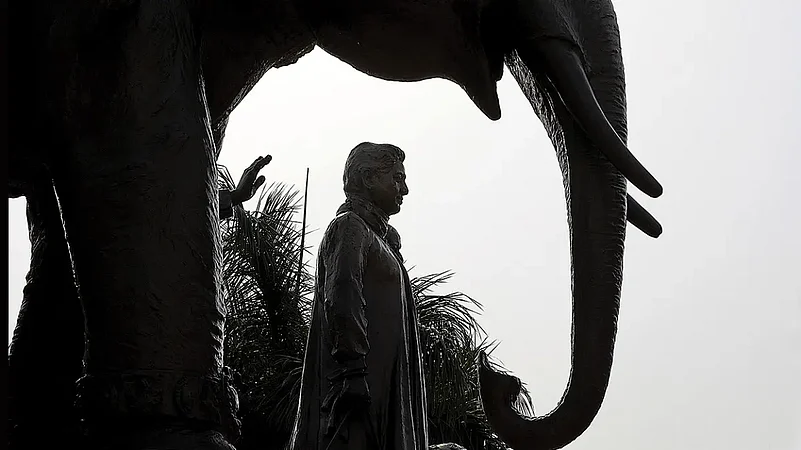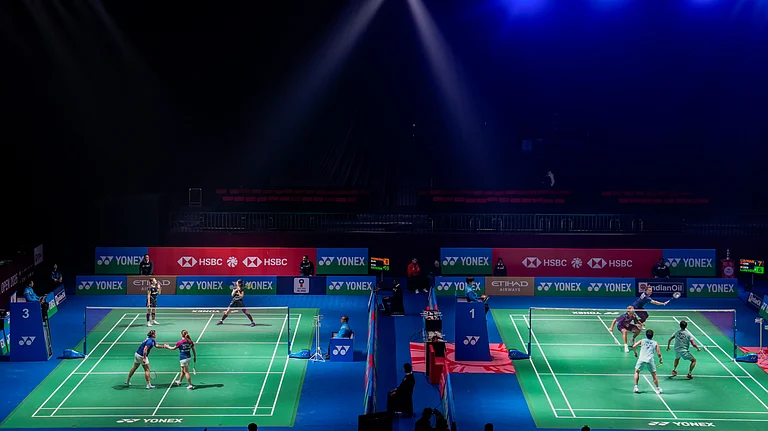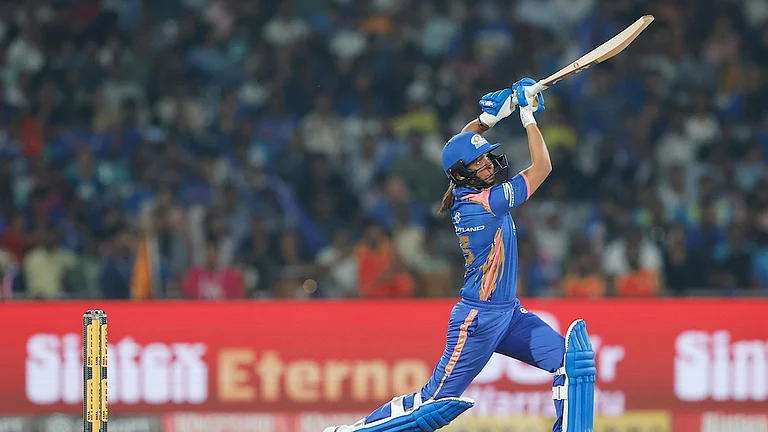An eerie silence envelops the largely deserted Lucknow office of the Bahujan Samaj Party (BSP), just one month after the 2022 UP assembly election results. Party president Mayawati has barred party members from talking to the media. Three men who maintain visitor records are sitting together, looking very bored. It is noon, but the office has not had a single visitor today. “The election is over, so why are you here? Now nobody comes here unless there is a meeting or a press conference,” says one of the men. Rewind to 2007, when BSP had formed the government with a full majority on the back of a strong cadre base and was known for its alliances with several intermediate and upper caste groups. This year, it won just one seat in the assembly elections and is facing mass desertion.
In 1973, BSP founder Kanshi Ram first constituted the Backward and Minority Community Employees Federation (BAMCEF) in an attempt to create a network of educated lower caste people and a Dalit consciousness that would distinguish the Dalit-Bahujan movement from other upper-caste dominated parties. After BAMCEF, Kanshi Ram formed Dalit Shoshit Samaj Sangharsh Samiti (DS4) in 1981 as a ‘cultural wing’ in Punjab to mobilise the Dalit youth, students and women, before it expanded in Uttar Pradesh, Himachal and Haryana. Both BAMCEF and DS4 played a crucial role in establishing the BSP cadre base in North India.
In the 1980s, when the Congress started to decline in Uttar Pradesh, leaving behind a vacuum, the BSP, formed in 1984, rose as an alternative for Dalits in the state. Kanshi Ram selected leaders from various SC and OBC groups, including Mayawati, R.K. Chaudhary, Sukhdeo Rajbhar, Barkhu Ram Verma, Phool Singh Bariya, Gandhi Azad and Sonelal Patel. As a party that identified with the Dalit cause, the BSP often had to face many prejudices. Since its inception, the BSP never shied away from forging alliances with parties holding diametrically opposite ideologies. Kanshi Ram forged an alliance with BJP in 1995. Mayawati also formed an alliance with Samajwadi Party (SP) in the 2019 Lok Sabha election.

Such temporary social alliances complemented its cadre base. It now had twin engines to propel its electoral prospects—dedicated cadres and influential persons of other castes brought into its fold as part of expedient alliances. In a recent article for The India Forum, Gilles Verniers, assistant professor of Political Science at Ashoka University, writes: “The strategy devised by the then-leader Kanshi Ram was to build local alliances with relevant dominant castes, and to combine the strength of BSP’s appeal among Dalits with the vote-getting capacity of candidates recruited externally.” However, many BSP workers grew unhappy about the choice of candidates, and accused the party of giving tickets to the rich. “Kanshi Ram used to say, ‘Do not sell your vote. Your vote is important’. That helped BSP to strengthen its cadre,” says Professor Badri Narayan of G.B. Pant Social Science Institute, Allahabad. It made illiterate lower caste voters realise the value of their vote. Slogans like, ‘Thakur, Brahmin, Bania Chhor, Baki Sab Hai DS4 (except Thakurs, Brahmins and Bania, everyone is DS4)’ and ‘Vote hamara, Raj tumhara, Nahi chalega, Nahi chalega (Our vote, but your rule won’t work)’—were at the centre of Dalit-Bahujan mobilisation.
From 1990, the ‘Ayodhya Issue’ helped the BJP mobilise around Hindutva. Also, Mandal politics brought parties like SP to prominence. A phase appeared in UP politics when all parties were expanding on the declining base of the Congress. The shrinking the Congress support base among the Dalit and backward castes established the BSP as a secular “lower-caste party, hostile to upper castes, with aim of uplifting Dalits,” writes academic Sudha Pai, in her book, Dalit Assertion: Oxford India Short Introductions.
“From 2007-09, Mayawati was viewed as a potential prime minister candidate,” notes senior journalist Ajoy Bose, a close observer of Dalit politics. However, temporary alliances soon ran out of steam as her five-year term failed to forge solidarity among castes or widen her cadre base. “The disenchantment was not just among Brahmins but also among Dalits. Her leadership saw a sharp fall in BSP’s support base,” adds Bose. Since last year, BSP has been running a ‘Brahmin outreach programme’ to forge a social alliance with the Brahmin community—similar to what it had done in 2007. “But forging social alliances with upper castes was not in Kanshi Ram’s plan,” says a senior BSP leader. The disenchantment also enabled smaller caste parties like Suheldev Bharatiya Samaj Party (SBSP) and Nishad Party to eat into the BSP’s base. Leaders like O.P. Rajbhar, Dara Singh Chauhan and Swami Prasad Maurya left for greener pastures.
ALSO READ: Unfailing Commitment Of CPI(M) Red Brigades
Bose believes a new “fluid” kind of Indian politics is emerging. “Dalit youth’s trust in BSP is dwindling,” he observes. Emerging leaders too are not interested. Bhim Army chief Chandrashekhar launched his Azad Samaj Party on the 86th birth anniversary of Kanshi Ram and accused the BSP of going “soft” against the Centre. This deepened a rift in Dalit leadership. In 2019, former BSP MLA Rajendra Gudha accused the BSP of selling tickets for money; an accusation that resurfaced in the 2022 election. Bose says, “Mayawati decides the candidate on the basis of how much they can give to the party fund, and whether this candidate can manage their own campaign.” Several leaders deserted the party. Those who have stayed on such as Barkhu Ram Verma, Gandhi Azad, and Sukhdeo Rajbhar, have lost appeal among the cadre.
BSP’s decline has been consistent. In 2012, the party got 25.9 per cent of the votes and 80 seats. In 2017, it only won 19 seats with a 22.2 per cent vote share. Now, in 2022, its vote share stands at a precarious 12.9 per cent.
(This appeared in the print edition as "Elephantine Entropy")
ALSO READ


























